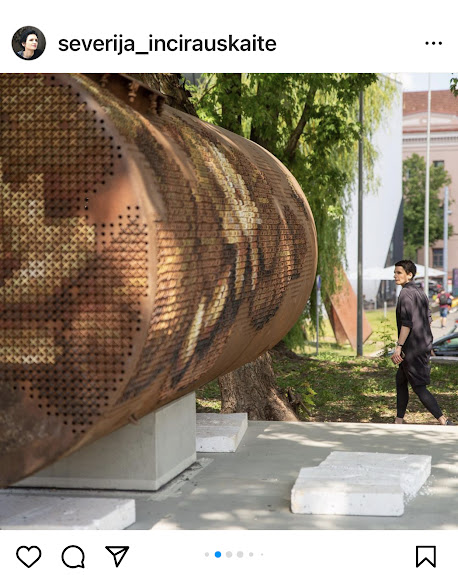Looking back through my photos from our site visit to Saltaire in January 2023, I was struck by how many I have of the allotments site, and I remember the pull towards old domestic objects that had been used by the plot holders.
I decided against using a growing medium for this project, but will revisit it for future work using slower-growing plants and still with ethical considerations.
I'm now going with the pull towards using old, unwanted objects that can be re-purposed. This sits well with many elements of the project for me: my own dislike of waste and unnecessary expense, a keen interest in how objects can be reused long after their expected use is over, the ethical and sustainable bent we are expected to explore within this project, and a desire to explore how these ideas will connect with the atmosphere and history of Saltaire.
I've previously come across artists who embroider/stitch onto old/domestic/industrial/unexpected objects, creating unusual talking points. This led me to investigate how I could realistically obtain and then embellish such an object.
Cornish-based artist Beth Jordan (freckleandknot on Instagram) is inspired by nature and the structures around her to create pieces from reclaimed/ethically produced wood, paper, and thread, often incorporating words into her work. These things sing to me, as a lover of words and how they can be represented in so many ways other than pen on paper, ways that reinforce our interpretation of them or encourage us to see them in different ways.
Another artist I was guided to is Severija Incirauskaite-Kriauneviciene, a Lithuanian artist, who embroiders onto/into old, rusted, metallic objects, such as buckets, pieces of cars, and an old water tank, at various scales.
I love the juxtaposition of harsh, unfeeling, rusty, industrial decay alongside the soft, vivid, gentle textiles used to embellish these objects, so began to think how I could use similar ideas to express my interpretation of the Habitat theme.
www.instagram.com. (n.d.). Login • Instagram. [online] Available at: https://www.instagram.com/freckleandknot/ [Accessed 19 May 2023].
www.instagram.com. (n.d.). Login • Instagram. [online] Available at: https://www.instagram.com/severija_incirauskaite/ [Accessed 19 May 2023].




Comments
Post a Comment